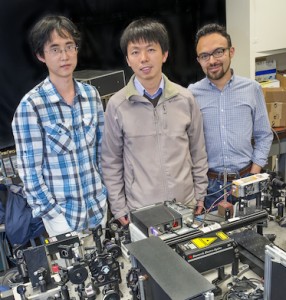 Berkeley Lab Researchers Use Light to Dope Graphene Boron Nitride Heterostructures
Berkeley Lab Researchers Use Light to Dope Graphene Boron Nitride Heterostructures
Graphene continues to reign as the next potential superstar material for the electronics industry, a slimmer, stronger and much faster electron conductor than silicon. With no natural energy band-gap, however, graphene’s superfast conductance can’t be switched off, a serious drawback for transistors and other electronic devices. Various techniques have been deployed to overcome this problem with one of the most promising being the integration of ultrathin layers of graphene and boron nitride into two-dimensional heterostructures. As conductors, these bilayered hybrids are almost as fast as pure graphene, plus they are well-suited for making devices. However, tailoring the electronic properties of graphene boron nitride (GBN) heterostructures has been a tricky affair, involving chemical doping or electrostatic-gating – until now. Read more…